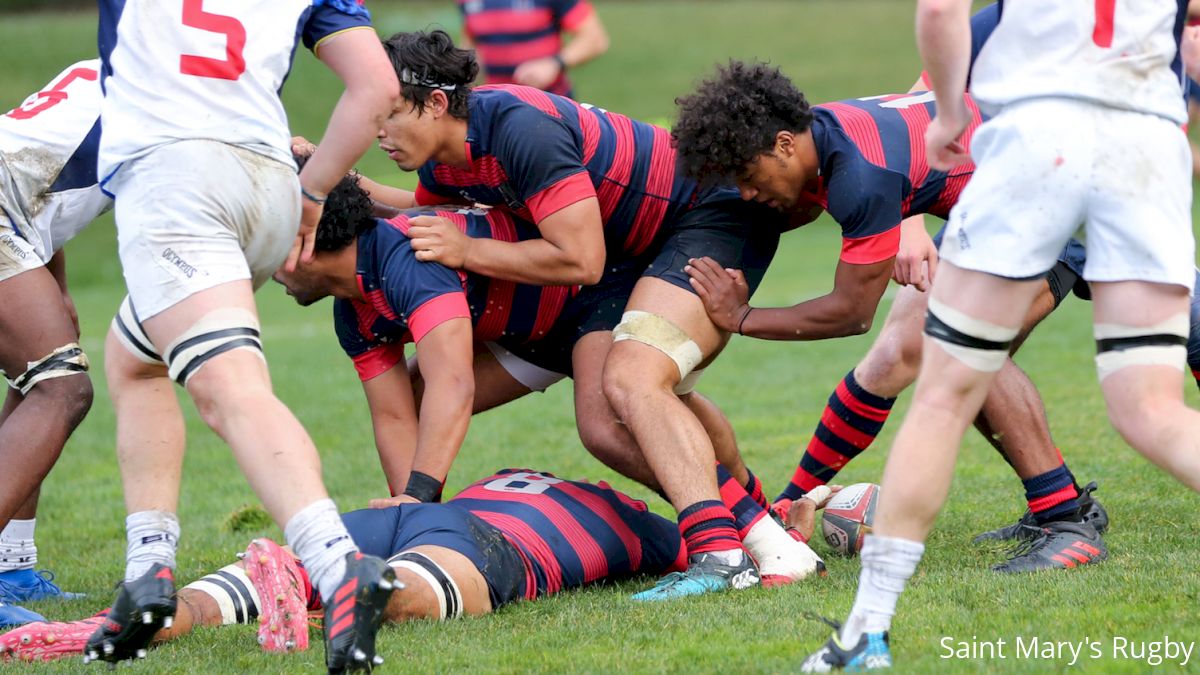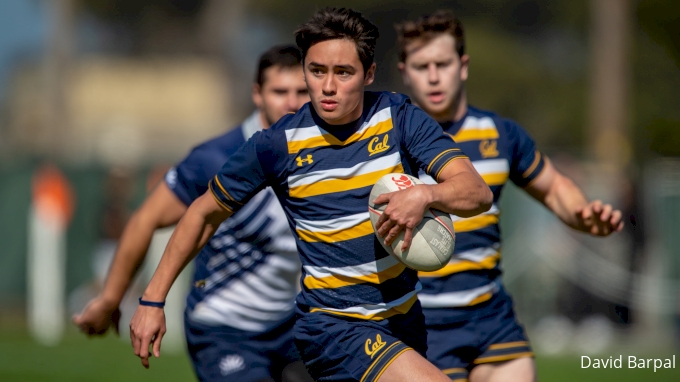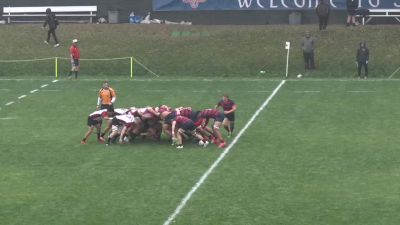The Hurt 100: How Big Scores Are A Problem In D1A
The Hurt 100: How Big Scores Are A Problem In D1A
A look at why there are so many 100-point games in D1A rugby.

If you're in college taking an exam, scoring 100 is usually a good thing, but when it comes to rugby, no one wants to see a score go to triples digits; unfortunately, we're seeing a lot more of them in D1A matches this year, and it's a problem.
By our count, so far this season, there have been 17 games between D1A programs in which one team has topped 100 points. Cal has basically stopped sending out game report press releases because of those lopsided scores—the Bears have hit the century mark five times, averaging 124-1 in those games. Saint Mary's has four 100-point games, all shutouts. BYU has two, and Arizona, Arkansas, Baylor, Central Washington, Kuztown, and Penn State all have one.
We're not even counting the half a dozen or so games where a team scored between 90 and 99.
What's going on?
FloRugby spoke with coaches and administrators about this development and found, first of all, that everyone agrees it's happening, and happening more than it used to, and everyone agrees it's not a good thing. It's not a good thing for the losing team, as you run the risk of players just losing enthusiasm when they get smacked around that much. It's also detrimental to the winning team. No one wants to play in blowouts. You don't learn anything from a blowout. It's just not as much fun.
West Coast Problem?
The vast majority of these 100-point games are happening on the West Coast. Of the 17 we found, the 13 came courtesy of Cal, Saint Mary's, BYU, Arizona, and Central Washington. Two were scored by middle-country teams, and two by eastern teams.

Why is that? Well, for one thing, the weather in the Northeast and the Midwest in the fall doesn't lend itself to runaway scores. There is an Eastern and a Western style of play, and there's a Northern and a Southern style of play. The cold-weather teams kick a bit more, maul a bit more, and play a slower game.
In addition, the leagues are just more competitive. The Mid-South has teams capable of scoring big; they just end up playing each other a lot, and all of the teams in the Mid-South are strong. Having said that, Life scored 95 on Clemson, so they're not completely immune.
It's also worth noting that the Red River had two 100-point games, but also three more 90-point games.
The same can be said, however, of the Rugby East, the Big 10, and the Liberty. The competitive difference between the top two or three teams and the bottom two is not huge. Even so, all of these conferences have seen blowouts, just not those 100-point scores. Usually, it's more like 76-10.
So we're thinking that the bottom end of the West Coast conferences is having a tough year, and the style of play prevalent in the West—a bit more risk-taking—leads to high scores if you make mistakes.
Problems On The Losing End
Playing college rugby as a club program on the West Coast is not easy. You're likely playing against some national title contenders at least once, and usually twice. If you lose a couple of players to injury or graduation, you could get into trouble quickly.
It's not that these losing teams are poor. The teams on the receiving end of these scores fall into two categories: a struggling team against very good opposition, or a good, possibly ranked, team against excellent opposition.
In the West, UC Davis, Cal Poly, Santa Clara, Utah, and Air Force, all teams that have been ranked or come very close to being ranked, have shipped 100 points.
But all of these teams struggle with depth, and when you're playing tough games every week, the loss of a player or two can be devastating.
Issues On The Winning End
The good teams are getting better. They are getting better regardless of whether they issue scholarships or not; it's just a fact that college students gravitate to good rugby programs. That makes the starting 15s for these teams very, very good, and makes the next group strong, too. Saint Mary's has the top two hookers in its conference, the top two No. 8s, the top two openside flankers.
So when a game gets out of hand and is 60-0 at halftime, you can empty the bench, but it's a bench you've had to select beforehand, and those guys are a) not that much different from the guys who started, and b) itching to prove to the coach that they deserve to start.
By the way, Saint Mary's has tried to split squads. They played Santa Clara and UCSB on the same day with separate starting 15s ... and scored over 100 against both.
The factors that make a college team strong are also the factors that make a team strong and deep, which means running on the subs won't change much in a runaway game.
The Ever-More-Difficult Admissions Game
OK, with recent items in the news, this is a touchy subject, but admissions does play a part in all of this. Colleges are becoming more difficult to get into. It wasn't that long ago that a school with a 20% acceptance rate was considered "most selective" or "most competitive". Some of those schools are now accepting less than 10%, or even 5%, of applicants.
Schools are in the University of California system are becoming much harder to get into. That system has found out that there is a large pool of overseas students very much want to study in the USA, and will pay the full rate, which is about three times the tuition for a California resident.
And with the US population rising, there are more and more students fighting for places in colleges that have limited space. Something has to give. Some programs can tag applicants, essentially saying "if this student has the qualifications to get in, AND is a strong rugby player, we'd like him to get a spot." Those are rare.
If a rugby team has no leverage—no history or little support on campus—then it's unlikely to be able to recruit rugby players in any meaningful way, while other colleges can use rugby to raise their profiles and diversify their applicant pools.
Coaching
There is a very strong correlation between consistency of coaching and success. When a program changes coaches frequently, it is difficult to build a program.

In addition, some coaches we spoke said that there needs to be more of an effort among successful coaches to work with coaches at struggling programs. This necessitates a little humility on the part of coaches, however. It's tough to have an outsider come work with your players, but that may be what's needed. The secrets aren't that secret. It's not fancy plays that lead to sustained success in college rugby, it's a combination of the athletes and the culture.
And interestingly, team culture is often learned player-to-player. If a struggling program embedded with a successful program for a few days, what could that do to help a coach improve his or her team?
What Next?
What we will probably see is some teams drop out of D1A because they aren't competitive and don't see themselves being competitive anytime soon. It is probably a good thing that D1A shrinks a bit.
But we also need to see some programs revitalized. That might be a concerted effort within the game to find the right coaching staff for a specific team, or it might be a major program partner with a struggling one to help make them better.
It's easy to forget, by the way, that 15 years ago or so there was one truly strong college team, Cal. Then BYU re-entered the national consciousness, and then Saint Mary's started to get stronger. Now we have as many as ten teams that are really good, with as many as six with a legitimate shot at winning a national championship.
That's the good news about the college game improving. Some other good news is that coaches say they don't think, overall, that one or two massive blowouts can kill a team's mojo. Some teams just know where they stand at the moment, take their whuppin', and move on. That's probably a healthy attitude if you sprinkle it with enough anger to work to get better.
If a team dissolves because it got triple-digited, it probably had other problems, too.
But if you look at the dark cloud to that silver lining, it's easy to forget that some of the teams that made national finals or won the old D1 College Championship are now suffering some of those 100-point losses. Air Force was a national champion in 2003. Utah, Cal Poly, and Wyoming all made national finals since 2000. All four have given up three digits in a game this season.
It just goes to show you that you have to be vigilant, you have to change with the times, and that factors such as coaching changes or rising admissions selectivity can hit anyone.